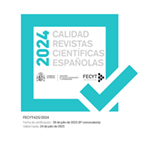Antonio Gramsci y la reforma educativa de Giovanni Gentile. La revolución pasiva como criterio de interpretación histórico-educativo
Resumen
A partir de la fórmula revolución pasiva, el artículo aborda teóricamente la cuestión educativa en los Cuadernos de la Cárcel. Central en los nuevos estudios gramscianos, la fórmula revolución pasiva no ha tenido un papel significativo en las indagaciones educativas de los escritos de Gramsci. En lugar de aislar el tópico educativo de la trama conceptual de los Cuadernos, se busca articular la cuestión pedagógica con nudos temáticos centrales del corpus gramsciano a luz del oxímoron revolución pasiva. En esta línea, se asume la revolución pasiva como una fórmula heurística, es decir, como una perspectiva general que organiza (en diferentes sentidos y tiempos) la investigación carcelaria en torno a la crisis de hegemonía y recomposición del orden. Luego de interpretar una serie de conceptos gramscianos, tales como hegemonía, clases subalternas, Estado integral e intelectuales bajo el prisma de la revolución pasiva, se aborda el análisis de la reforma educativa de Giovanni Gentile (1922-23) en los Cuadernos. Se considera, a modo de hipótesis, que en la reflexión gramsciana, esta reforma opera como el capítulo educativo del análisis del fascismo como intento de revolución pasiva. Entre las conclusiones, se esgrime que de la complejidad analítica de la reforma gentiliana en los Cuadernos es posible derivar un criterio de interpretación histórico-educativo de reformas educativas.
Descargas
Descarga artículo
Licencia
La revista Las Torres de Lucca. International Journal of Political Philosophy, para fomentar el intercambio global del conocimiento, facilita el acceso sin restricciones a sus contenidos desde el momento de su publicación en la presente edición electrónica, y por eso es una revista de acceso abierto. Los originales publicados en esta revista son propiedad de la Universidad Complutense de Madrid y es obligatorio citar su procedencia en cualquier reproducción total o parcial. Todos los contenidos se distribuyen bajo una licencia de uso y distribución Creative Commons Reconocimiento 4.0 (CC BY 4.0). Esta circunstancia ha de hacerse constar expresamente de esta forma cuando sea necesario. Puede consultar la versión informativa y el texto legal de la licencia.









